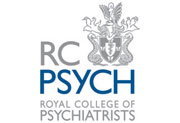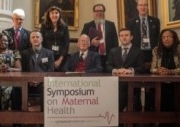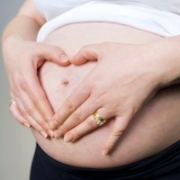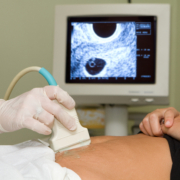Abortion and breast cancer: the link that dares not speak its name
 As this is the last blog that I will write for CMF, I thought I’d write it on a topic that I believe is hugely important and highly controversial but one where findings are hidden and suppressed.
As this is the last blog that I will write for CMF, I thought I’d write it on a topic that I believe is hugely important and highly controversial but one where findings are hidden and suppressed.
Patrick Carrol, in an article in the Journal of American Physicians and Surgeons, claims that: ‘British medical journals are reluctant to publish papers that report a link of breast cancer to induced abortions.’ I concur and so it is this link that I am writing about.
The 2011 Royal College of Obstetricians and Gynaecologists report ‘The care of women requesting induced abortion’, definitively states that: ‘Women should be informed that induced abortion is not associated with an increase in breast cancer risk’. (p42). This report is widely cited to dismiss any evidence of a link. Another highly publicised report by ‘Education for Choice’ (EFC) states that: ‘linking abortion to breast cancer and ‘post-abortion stress’ is ‘medical misinformation’, adding that Cancer Research UK has: ‘confirmed that abortion does not increase the chance of developing breast cancer.’
Is this link really so indisputable? Is it really ‘medical misinformation’ to suggest that there may be a link?
Is the matter settled?
No, it is not.
The possible existence of a link between abortion and subsequent risk of developing breast cancer has in fact been a cause of controversy and debate for many years and still is.
But let’s start with what is not controversial: carrying a first pregnancy to birth is protective against breast cancer (see here too).
This immediately shows that a woman will have a higher risk of breast cancer if she has an abortion compared to carrying to term. I wonder how many even know of this basic fact?
Breast cancer is a multifactorial disease and there are many risk factors which impact breast cancer risk. Most factors, however, are related to reproduction and/or female reproductive hormones: oral contraceptives (classified by WHO as a group 1 carcinogenic), nulliparity, late age at first full-term pregnancy, having fewer children, not breastfeeding them, high alcohol consumption, smoking cigarettes and, reported very recently, HRT. All these increase the risk of breast cancer. Consequently, in the ‘West’ the baseline lifetime risk of breast cancer is high (around ten per cent) without considering abortion at all.
So what happens when we do consider abortion as a possible risk factor for breast cancer?
A peer-reviewed research report on a group of women in India explains the hypothesis for a breast cancer link with abortion: ‘Induced and spontaneous abortion increases the risk of developing breast cancer. In early pregnancy, levels of estrogen increase, leading to breast growth in preparation for lactation. The hypothesis proposes that if this process is interrupted by an abortion before full maturity in the third trimester then more relatively vulnerable immature cells could be left than there were prior to the pregnancy, resulting in a greater potential risk of breast cancer over time. Though many studies have reported an association between abortion and breast cancer risk, the exact influence is still unclear.’
What does other research find?
The 2011 RCOG report was published before a major meta-analysis of 36 studies on abortion in 2014, which found that induced abortion is significantly associated with an increased risk of breast cancer – by as much as 44 per cent after one induced abortion. And the risk of breast cancer increases even more as the number of abortions increases – at least two induced abortions raised the risk by 76 per cent and more than 2 induced abortions nearly doubled the breast cancer risk compared to women with zero previous abortions.
This meta-analysis, by Huang et al, was published in the internationally recognised peer-reviewed journal, Cancer Causes and Control but, unlike the EFC study which was published in the same year, it escaped the notice of the British media and journals (or perhaps was deliberately ignored?).
The findings of Huang’s meta-analysis are consistent with the first systematic review of this link by Brind et al, published in the BMJ in 1996. Huang himself notes the consistency between both their findings in his report.
However, the findings by Brind did not fit with the RCOG claims in 2011 of no association. So in their 2011 report, the RCOG disregard his research. But interestingly, the RCOG was not always so dismissive. In their 1997 and 2001 versions of the ‘Guideline on the Care of Women Requesting Induced Abortion’, they admitted that: ‘The Brind paper had no major methodological shortcomings and could not be disregarded.’
So there appears to be some historical revisionism going on by the RCOG.
While ignoring Brind, the RCOG put great weight on another major meta-analysis, which had findings they concur with: Beral et al from 2004. Beral’s analysis indicated that abortion does not increase the risk of breast cancer, and is now one of the primary papers cited as evidence that there is no causal link.
Without going into the details of these meta-analyses, we thus have two of the three meta-analyses showing an association, and one of these is recent (Huang).
Add to this the findings of a link in 51 of over 70 individual scientific papers on the matter published to date. So it is simply not justified to claim that evidence for a link is non-existent and ‘misinformed’. Just as an example: two studies published since the 2011 RCOG report (2012 & 2015) find that Mexican women with a history of abortion have more than triple the risk of breast cancer.
However, it is research in China, India and Bangladesh that is some of the most revealing.
Research findings from Asia
The link is now showing up more clearly in the world’s most populous countries, where breast cancer used to be rare. Evidence suggests that the growing breast cancer epidemic in China is an entirely predictable result of their ‘one-child-policy’ and associated forced abortions.
Just a few months ago research on 800 women, published in the Journal of Epidemiology by Xuelian, found that women in China with a history of medical abortion more than triple their odds of breast cancer diagnosis – not too dissimilar to Huang’s findings (and particularly concerning considering that 77 per cent of UK women now have a medical abortion).
Xuelian summarises his findings: ‘The relationship between induced abortion and birth control methods and breast cancer was complex, though being exposed to induced abortion and two or more birth control methods in one’s lifetime appeared to be risk factors for breast cancer in Chinese women.’
He reports that the incidence of breast cancer rose significantly between 2007 and 2013 while the mean age at the time of breast cancer diagnosis in Chinese women dropped by ten years. His conclusion is clear: ‘Not coincidentally, women of this age were generally at reproductive age during the period when the Chinese birth-control policy (one child per family) was fully implemented.’
He also explains why there is a link:
‘It is well known that women’s estrogen and progesterone levels increase during a pregnancy, which promotes the growth of the mammary glands. When a pregnancy is terminated by surgical abortion, estrogen and progesterone levels suddenly drop, which consequently terminates the growth of breast cells, leading to acinar atrophy. Incompletely differentiated breast epithelial cells are more susceptible to stimulation by carcinogenic substances, and therefore become cancerous relatively easily…’
While for medical abortions: ‘…the antiprogestin contained in the drug may interfere with the internal hormone environment, making it conducive to the development of hormone-related tumors.’
Added to this: ‘Surgical and medical abortion can increase the risk of breast cancer by delaying the timing of a full-term pregnancy, which is considered to be a protective factor of breast cancer.’
As an aside, it is simple to estimate the ultimate effects of such an exposure as abortion on a population of about 1.4 billion women in India and China alone: if 30 per cent had an abortion and even just three per cent of these had breast cancer because of it, that is 12.6 million women who would get breast cancer because of an abortion.
The importance of reproductive history
Promotion of abortion has not been limited to China. In South Asia alone, between 2007-2017, at least 20 studies report data on this issue. As this report shows, there was a significant and moderately strong, dose-dependent association between abortion and breast cancer. The authors conclude: ‘The moderately strong association identified between abortion and breast cancer explains in part the spread of the breast cancer epidemic to South Asia as it has become Westernised.’
In fact, women in India and neighbouring countries are ideal for studies of the link, especially those in rural areas. They generally marry, have children early, have several children, breastfeed their babies and do not use the pill, smoke or have high alcohol consumption. In other words, most of the other major risk factors for breast cancer are absent. In South Asia, both breast cancer and induced abortion have been relatively rare, until recent years.
Many ‘Western’ women, as I noted above, however, engage in other behaviours – besides abortion – that can cause breast cancer. They have fewer children and have them later (or not at all). They use oral contraceptives when young and go on HRT when older and they have lower rates of breastfeeding. These ‘confounding factors’ make it difficult to separate out the effect of induced abortions on a woman’s lifetime breast cancer risk. But these factors are largely absent in India, so the abortion-breast cancer link comes out more clearly.
Though the independent effect of induced abortion is not always statistically large, it is important to also consider the overall influence that abortion has in shaping a woman’s reproductive history.
The single effect of induced abortion on breast cancer risk is trumped by the overall effect of long-term avoidance of pregnancy. In this (more ‘Western’) lifestyle pattern, the effects of late age at first full-term pregnancy, or nulliparity, oral contraceptive use, and induced abortion (possibly while nulliparous or long before first birth, if any) could all be evident and will work together to increase a woman’s breast cancer risk.
It is worth noting that as well as the difficulty in separating out confounding factors, another problem with the research is that studies (particularly those showing no association) often use poor research design – failing to ensure adequate follow up time, using inaccurate abortion registers and inappropriate study populations, and not dealing with the known problem of under-reporting of abortion.
What do we need to do now?
An updated meta-analysis is needed, and a genuinely transparent independent review of the evidence. Brind, Beral and Huang published very different conclusions and since their publication, many additional studies have been published across the world.
Informed consent. Women also need the opportunity for informed consent when choosing a procedure that will elevate breast cancer risk, a leading cause of cancer death in women. It is clearly crucial that the 200,000 women who have induced abortions in Britain each year are fully informed about the possibility of any link and that all official guidance on the matter is properly evidence-based. The incidence of breast cancer in the UK is on a large scale and while the aetiology is not resolved, this is an issue where the precautionary principle should apply.
More screening. Women who do choose induced abortion should be made aware of their increased risk, so that they can be deliberately screened at an appropriate time and through early detection find more curable cancers. If the abortion occurs at a young age when breast tissue is very dense, more appropriate screening with the use of ultrasound and MRI in addition to mammograms could be offered earlier than the age at which screening is standard, which is normally age 40. Ten years after an induced abortion would be an appropriate time to start this early screening.
Changing social norms. This is a tricky one, for obvious reasons. However, a social norm that encouraged carefully planned first pregnancies at the beginning of advanced education and career development would help reduce breast cancer rates.
Exposing ideologies. Clearly, I have a particular ideology on abortion, that I do not hide. But so does the RCOG, whose members are knee-deep in abortion. We don’t know how many abortions their President, Lesley Regan has personally performed in 30 years as a practising gynaecologist but it would be interesting to know. Such conflicts of interest and lack of transparency would not normally be permitted in such a high profile public body elsewhere. And how much is medical research on abortion truly free from the influence of ideological agendas? When will British medical journals publish papers that report a link of breast cancer to induced abortions?
Ultimately, however, women have a right to know that there is an on-going debate on the ABC link and that the matter is not settled.












Leave a Reply
Want to join the discussion?Feel free to contribute!